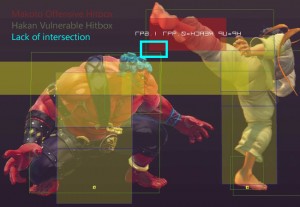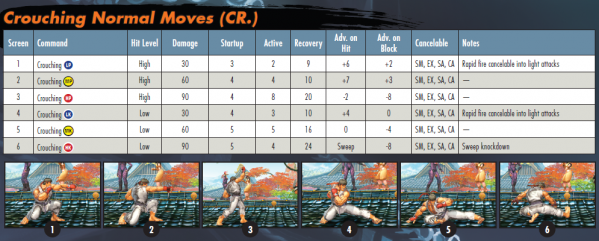
First, I must apologize. I just am completely unable to come up with any pun for the title that resembles the Jeremy Lin “Linsanity” meme. “Framesanity”? Nnnno. “Linksanity”? Not quite. “Fightsanity”? DEFINITELY NOT.
In the meantime, you’ll have to make do with having a headline in early 2012 that has the word ‘insanity’ in it, unaffected by puns. My bad.
Regardless, the true topic here is not current events in sports or Twitter; rather, we’re here to talk about the current trends in modern fighting games. A lot of gamers will pick up a controller at their friend’s house, playing a few rounds of the latest Street Fighter or Mortal Kombat, and they’ll button mash or use a degree of experience to properly bring defeat to their opponents. Maybe they’ll pick up the game because they just enjoy fighting games, and will even play it online. Some will become very good at these games in these ways, but then encounter the yawning gulf that lies between themselves and the next level: the semi-pro and pro players in the fighting game circuit. These next-level players will still inexplicably decimate the up-and-comer, who wonders just what the difference is between them.
The truth of the matter is, most gamers who have played or will play a fighting game have no clue what lies beneath the surface, how far down the rabbit hole goes, the iceberg beneath the water, and many other cliched phrases. There is a level of detail, specificity, and precision underneath most modern fighting games, and pro players know, understand, and use this system to their advantage. I could go into detail about these systems, but one could easily write a small novel out of that (and it would still be a better story than any of the Twilight books). Instead, just so you as a gamer are more informed, I’ll cover some of the basic concepts after the break, so you might understand just why you are being schooled so thoroughly.
Frames and Frame Advantage
While probably no more than a handful of people in the world could possibly count frames in a fighting game (and their talents are probably put to better use elsewhere), every pro player is mindful of the numbering of frames, to the point of studying and learning how many frames each part of an action will take. Each action has a startup period, an active period, and a recovery period, and only during the active period will the attack do any damage. Modern fighting games run at 60 frames per second, so you know that if Ryu’s LK has a 5 frame startup, a 6 frame active period, and a 7 frame recovery, the entire attack will take a little less than 1/3 of a second. What’s more, you know that for 1/5 of a second, your character is vulnerable, as he cannot do damage. This may seem inconsequential, but when you compare this to his HK, which only has 4 active frames out of 39, it’s easy to see which one is riskier; generally speaking, your character will not be able to do anything until the recovery period has ended.
Now comes the crazy part. When an attack connects, whether it’s successful or blocked, there will be a set amount of time where your opponent cannot do anything either, called Hit Stun or Block Stun, as appropriate. If the recovery period, meaning the amount of time until you can do anything again, is shorter than the Hit Stun, this means you’ll be able to act before your opponent can. This is how combos work! But if the recovery period is LONGER than the Hit Stun, you will not be comboing with this attack. This gives a player an indication of what attacks should be at the beginning of their combo string, and which ones should be at the end. Straightforward, yes?
Don’t forget Block Stun, though. Block Stun is ALWAYS shorter than Hit Stun. If your attack has a longer recovery period than the Block Stun, you will be frozen while your opponent has freedom to attack. A lot of attacks, though, (usually LP or LK and a few specials) are designed to have a shorter recovery period than the Block Stun, so they are safe to attack with without fear of retribution. Ever wonder why that semi-pro player was wiping the floor with you by using low-power attacks? That’s why.

Canceling, Linking and Plinking
So looking at the frame data, you understand how and why combos work a little better, right? Wrong.
Ok, that’s a bit harsh. You probably do. But there’s more to it, still!
You’ll notice that most attacks don’t give a lot of leeway in terms of the amount of frames you have to follow-up. If you really only had 2 frames to execute another attack after a MK (that’s 0.0333333333 seconds!), you’d never get that MK-to-HK hit in. Good news, everyone! Certain attacks are called “cancelable“, meaning that if you execute a certain type of attack before the recovery period is ended, it will go off anyway!
Of course, if you can manage to land the ridiculously precise timing to execute an non-cancelable attack within the Hit Stun, this will still let you land that extra attack. This is called Linking, and the pro players can not only execute this timing, they can do so under pressure. Many semi-pro players can as well, if they practice enough, but believe me, it takes LOTS of practice.
Many players, including the pros, use a trick to double their chances of hitting that 1-frame Link. This is called P-Linking, or Plinking for short. Let’s say you are trying to execute an attack with only a 1-frame Link window using the HP button. You can also hit the MP or LP button right after the HP button tap, and the system will read this as two HP button taps, because the HP has priority, being a heavier attack, over the MP or LP. This actually gives you two chances to hit that 1-frame Link! It’s difficult to execute at first, but it’s a lot easier to land with practice than 0.0166666667-exact timing!
If You Want to Learn More
We are by no means a fighting game site, but we can direct you places that are! These are resources that I have used, and encourage you to do the same:
Shoryuken Wiki – A great repository of knowledge to read about for all of the top fighting games.
Fingercramp Youtube Channel – Their Babies and Rehab series of videos offer great beginning instruction on understanding some of the more advanced concepts of fighting games.
Maximilian Youtube Channel – More HQ videos, with a lot of character specific videos cited by Capcom’s community site!
